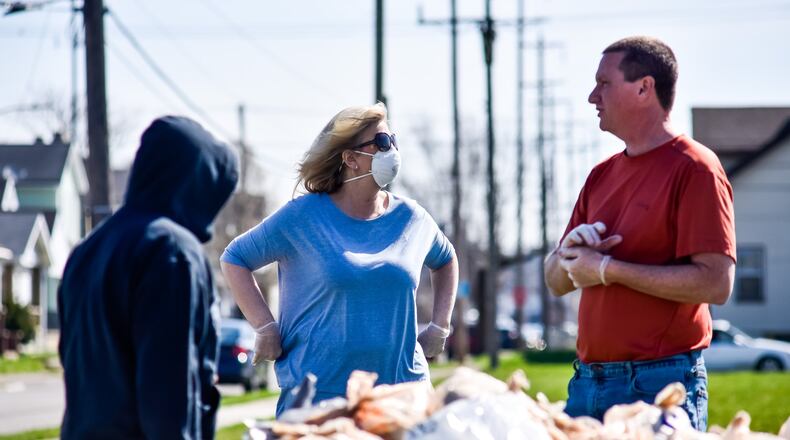Every school family, in its own way, is now a home-schooling family due to state-ordered isolation.
Most students work on computers or on family or school-supplied laptops – while those families without those digital learning tools can pick up paper lessons – prepared by teachers – handed to them in virus-safe fashion outside the front of their local schools.
One big difference from traditional classroom learning, said Ross High School student Zach Ungermann, is he can sleep in a bit and do his school work more according to his personal, daily bio-rhythm rather than a strict, classroom schedule.
“The upside is going at your (school work) at your own pace. I kind of like sleeping in a bit and then working on it in the evening,” said Ungermann.
The downside?
For some seniors like Ungermann, the annual ritual ailment of “senioritis” can be harder to combat at home without the normal structure of going to a school building.
“Motivation can be tough. Being a senior, you want to be done with all the high school work so senioritis can be pretty big,” said the Ross honor student.
His father, Eugene Ungermann, said the secret to successful home-learning is flexibility on the part of school parents.
“We’re giving him so flexibility on sleep and giving him independence but still monitoring his grades,” he said.
On the teachers’ side, they said the remote learning isn’t ideal because nothing can replace the personal reinforcement coming from traditional, one-on-one learning inside school buildings specifically designed to employ a wide variety of learning tools and spaces.
Joe Schorr is remotely teaching engineering design to 130 students at the Lakota East Freshman School in Liberty township as part of a Butler Tech satellite program.
Schorr is experiencing both sides of remote learning, as he also has small children who are learning from home during the shutdown.
“My students have been amazing so far. They are working in groups for a project,” he said from his Butler County home.
“We have transformed our project to simulate what it would be like to work with engineers at another location. So in a sense, remote learning has given us the opportunity to do more real life applications since many real world projects are done without ever getting together face to face,” said Schorr.
Lakota Schools’ 16,500 students had been on spring break but started its remote learning programs this week.
“I am trying to just be very flexible with my schedule,” he said.
“Lakota teachers have been asked to provide office hours for students and I told them I will be sitting at my computer between 9 a.m. to noon daily, but honestly I have my computer or my phone with me at all times to answer students questions.
“I feel that over the coming weeks we just need to be understanding that each of our students have unique circumstances at home and won’t all be able to get to their remote learning at the same time. My goal is to be there for them when they need it,” said Schorr.
Marlon Styles Jr., superintendent of Middletown Schools also has school-age children now learning from home and said he is sympathetic to the challenges.
But, he said its important for school parents and their children to handle this new learning paradigm calmly.
“We are not panicked by this,” Styles said in a recent video message sent to parents in the 6,400-student school system.
And he stressed school families should not be overly concerned by the shutdown’s impact on schooling.
“We understand the burden placed on you by the global pandemic,” said Styles.
Schorr said the new way of learning isn’t a better way.
“I think the hardest part of all of this is just not being there to see the kids daily,” he said. “I love the interactions in the classroom with my students so that is something I will miss over the coming weeks. “
About the Author
